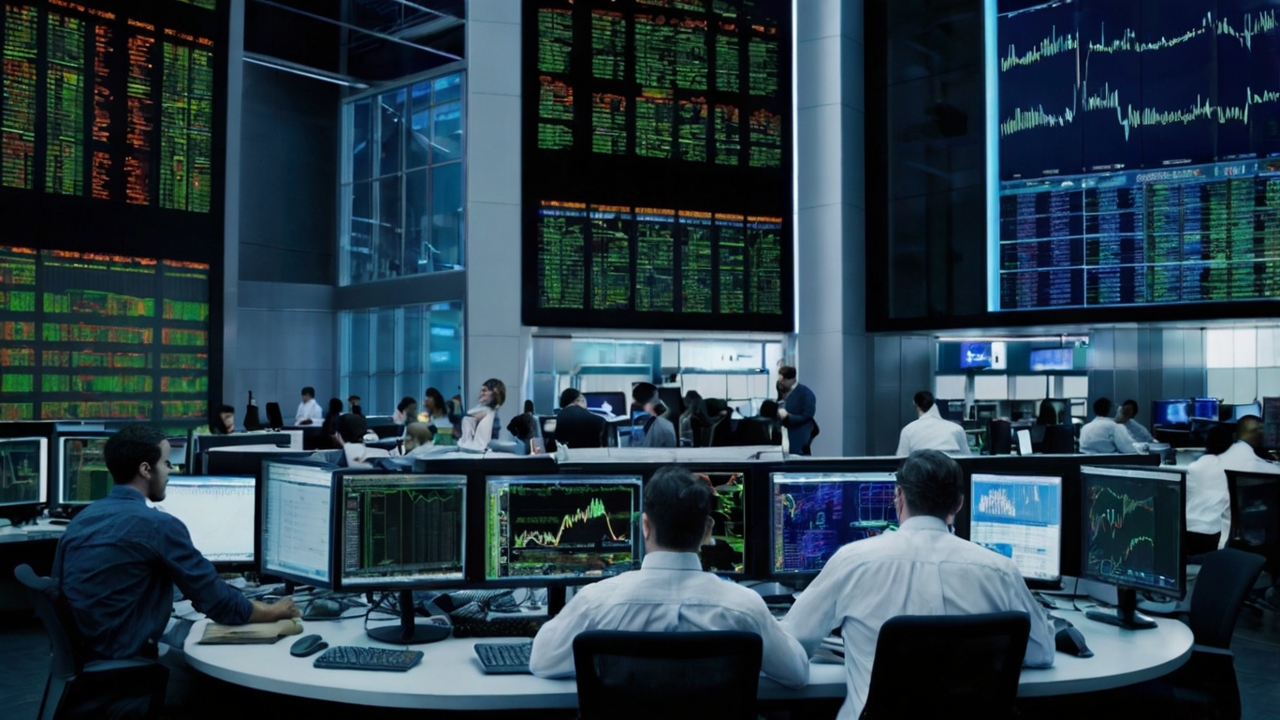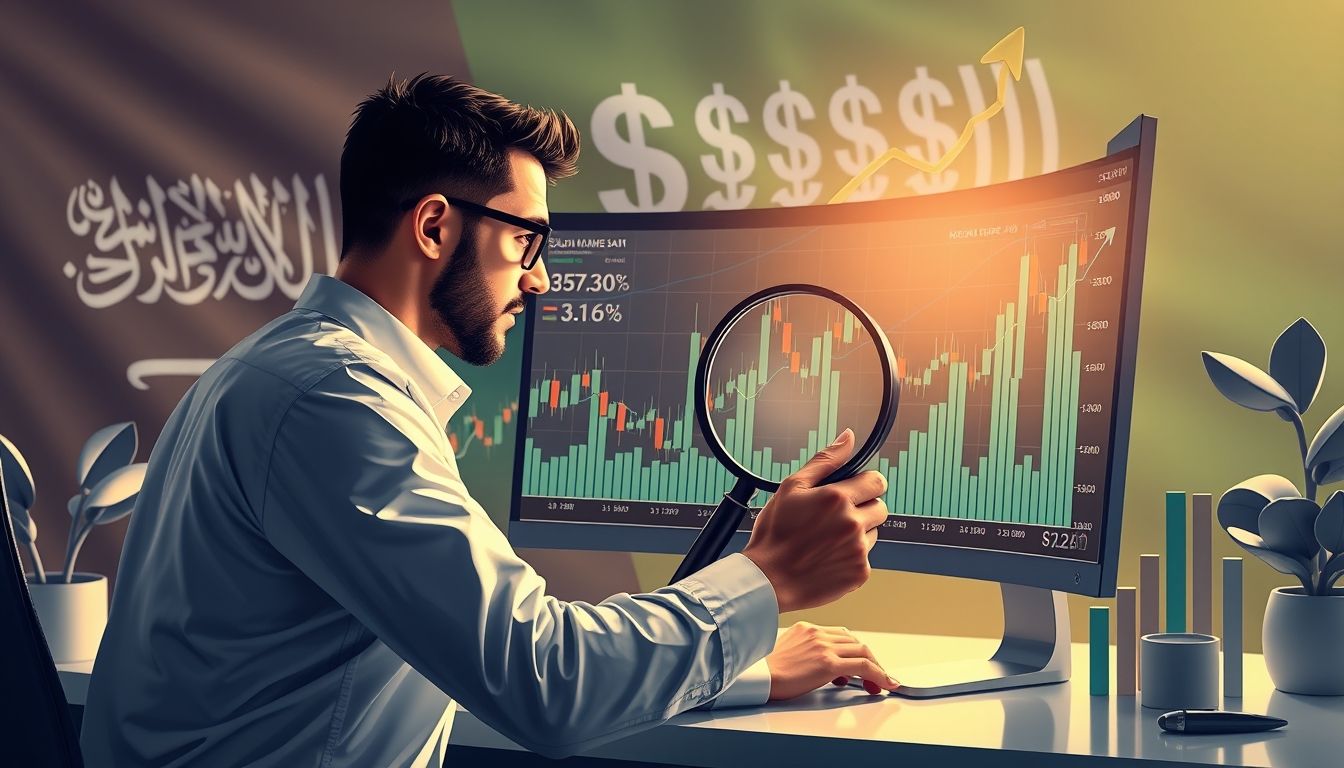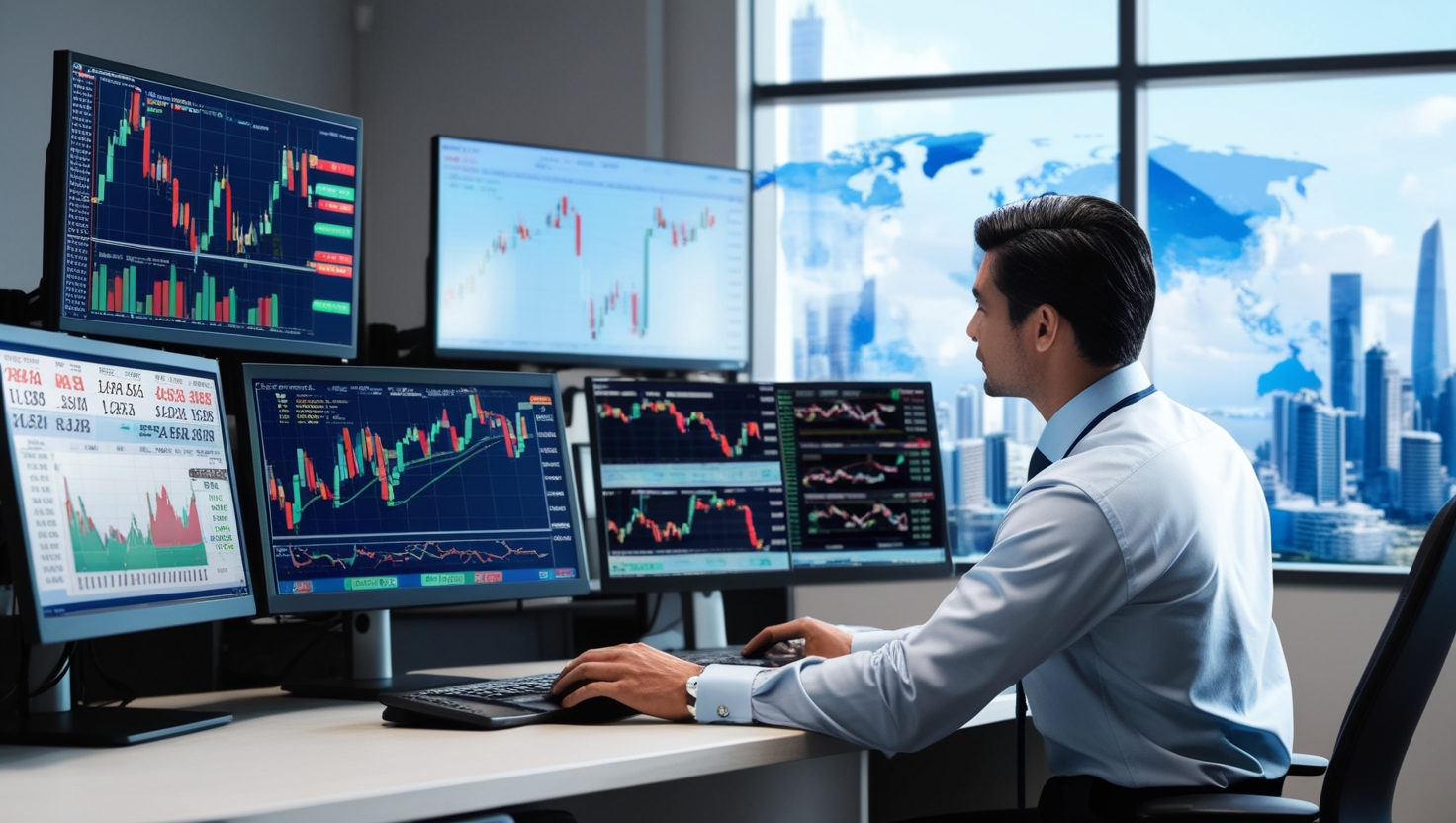Introduction: The Rise of Algorithmic Trading
The world of investment is undergoing a radical transformation with the emergence of algorithmic trading, a system that relies on sophisticated computer programs to execute trades automatically and quickly. These programs, supported by big data analysis and machine learning, are able to monitor trading opportunities and execute them in fractions of a second, giving investors a huge competitive advantage.
Chapter 1: What is Algorithmic Trading and How Does it Work?
Algorithmic trading, or automated trading, is the use of computer algorithms to execute trading orders. These algorithms rely on a set of predefined rules and criteria, such as price, volume, and time, to determine when and how to buy or sell financial assets.
Basic Operation Mechanism
- Data Analysis: Collecting and analyzing massive amounts of historical and real-time data from multiple sources.
- Opportunity Identification: Monitoring patterns and trends in the data to identify profitable trading opportunities.
- Trade Execution: Automatically sending trading orders to the exchange based on programmed rules.
- Monitoring and Adjustment: Monitoring the performance of the algorithm and continuously adjusting it to improve results.
Chapter 2: Benefits of Algorithmic Trading
Algorithmic trading offers a range of advantages that make it attractive to investors of all levels:
- Speed and Efficiency: Executing trades at lightning speed, reducing the risk of price slippage.
- Accuracy and Reliability: Reducing human errors and making decisions based on objective data.
- 24/7 Trading: The ability to trade in global markets 24 hours a day.
- Diversification: Managing large and diversified investment portfolios with high efficiency.
Chapter 3: Risks and Challenges Associated with Algorithmic Trading
Despite the many benefits, algorithmic trading involves risks and challenges that must be taken into account:
- Programming Errors: Errors in algorithms can lead to significant losses.
- Sudden Volatility: Algorithms may fail to cope with unexpected events in the market.
- Intense Competition: Success in algorithmic trading requires significant investment in technology and expertise.
- Legal Regulation: The legal and regulatory framework for algorithmic trading is still unclear in many countries.
Chapter 4: Practical Examples from the Arab Market
Algorithmic trading is beginning to gain popularity in Arab markets, where it is used by some large financial institutions and hedge funds. For example, some Gulf banks use sophisticated algorithms to trade stocks and bonds in local and regional markets.
Example: An Emirati investment fund uses an algorithm based on sentiment analysis in social media to predict stock price trends. The fund has outperformed benchmark indices thanks to this algorithm.
Chapter 5: Successful Global Examples
The US and European markets are leaders in algorithmic trading. Many large companies use sophisticated algorithms to generate significant profits.
Example: Renaissance Technologies, founded by mathematician Jim Simons, is considered one of the most successful algorithmic trading firms in the world. The company relies on complex mathematical models to analyze data and predict price movements.
Chapter 6: The Future of Algorithmic Trading
Algorithmic trading is expected to continue to grow and evolve in the coming years. Emerging technologies, such as quantum computing and artificial intelligence, will play an important role in improving the performance of algorithms and increasing their efficiency.
Prediction: We may see the emergence of open-source algorithmic trading platforms, allowing individual investors to develop and use their own trading algorithms.
Chapter 7: How to Get Started with Algorithmic Trading?
If you are interested in entering the world of algorithmic trading, here are some tips:
- Learn the Basics: Gain a good understanding of financial markets, algorithms, and programming.
- Choose a Suitable Trading Platform: Look for a trading platform that supports algorithmic trading and provides the necessary tools.
- Start with Small Amounts: Do not invest large amounts at the beginning, and experiment with different strategies before risking large capital.
- Consult Experts: Seek advice from algorithmic trading professionals before making any investment decisions.
Chapter 8: Tools and Software Used in Algorithmic Trading
The algorithmic trading process requires the use of a variety of tools and software, including:
- Programming Languages: Python, R, Java
- Trading Platforms: MetaTrader, TradingView, NinjaTrader
- Data Analysis Libraries: Pandas, NumPy, Scikit-learn
- Application Programming Interfaces (APIs): To connect algorithms to trading platforms.
Chapter 9: The Economic and Social Impact of Algorithmic Trading
The impact of algorithmic trading extends beyond financial markets, affecting the economy and society in general. Algorithmic trading can contribute to increased market efficiency and liquidity, but it can also lead to increased volatility and instability.
Discussion: Should algorithmic trading be regulated more strictly to protect investors and prevent financial crises?
Chapter 10: Tips for Investors in the Age of Algorithmic Trading
Given the dominance of algorithmic trading in the markets, investors should take some precautions to protect their investments:
- Be Aware of the Risks: Understand the nature of algorithmic trading and the risks associated with it.
- Diversify Your Investments: Do not put all your money in one basket, and diversify your investments across different assets.
- Use Stop-Loss Orders: Set stop-loss levels to protect capital from large losses.
- Monitor the Market Closely: Follow the news and developments in the financial markets, and be prepared to act quickly when necessary.
Conclusion: Algorithmic trading represents a revolution in the world of investment, but it also carries significant risks. Investors must understand these risks and take the necessary precautions before entering this field.



